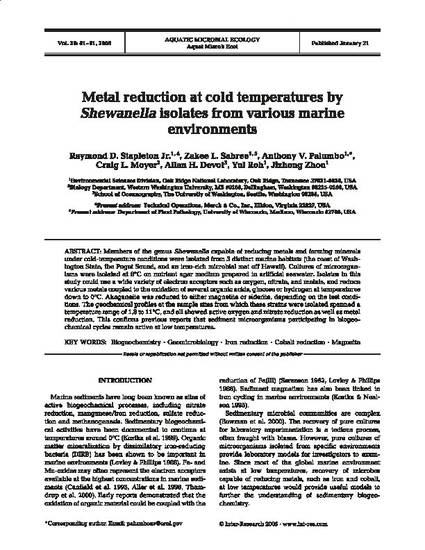
- biogeochemistry; iron reduction; cobalt reduction; magneite
Members of the genus Shewanella capable of reducing metals and forming minerals under cold-temperature conditions were isolated from 3 distinct marine habitats (the coast of Wash- ington State, the Puget Sound, and an iron-rich microbial mat off Hawaii). Cultures of microorgan- isms were isolated at 8°C on nutrient agar medium prepared in artificial seawater. Isolates in this study could use a wide variety of electron acceptors such as oxygen, nitrate, and metals, and reduce various metals coupled to the oxidation of several organic acids, glucose or hydrogen at temperatures down to 0°C. Akaganeite was reduced to either magnetite or siderite, depending on the test condi- tions. The geochemical profiles at the sample sites from which these strains were isolated spanned a temperature range of 1.8 to 11°C, and all showed active oxygen and nitrate reduction as well as metal reduction. This confirms previous reports that sediment microorganisms participating in biogeo- chemical cycles remain active at low temperatures.
Available at: http://works.bepress.com/craig_moyer/1/
